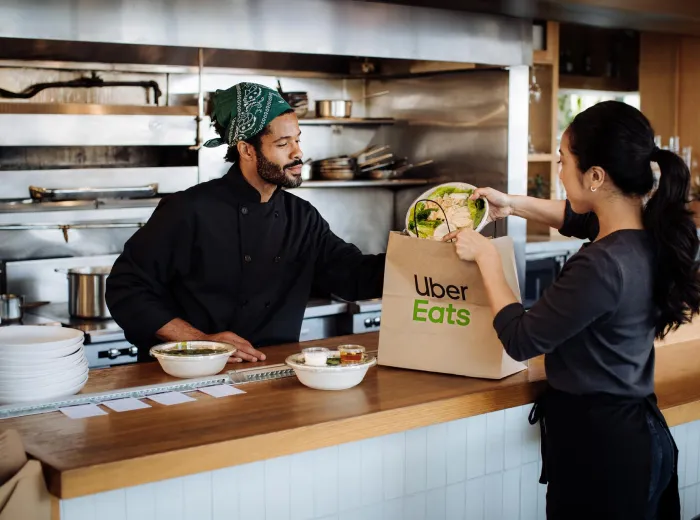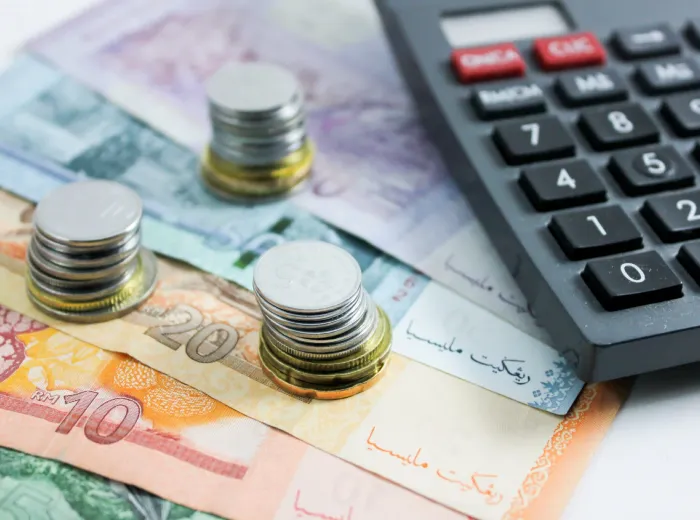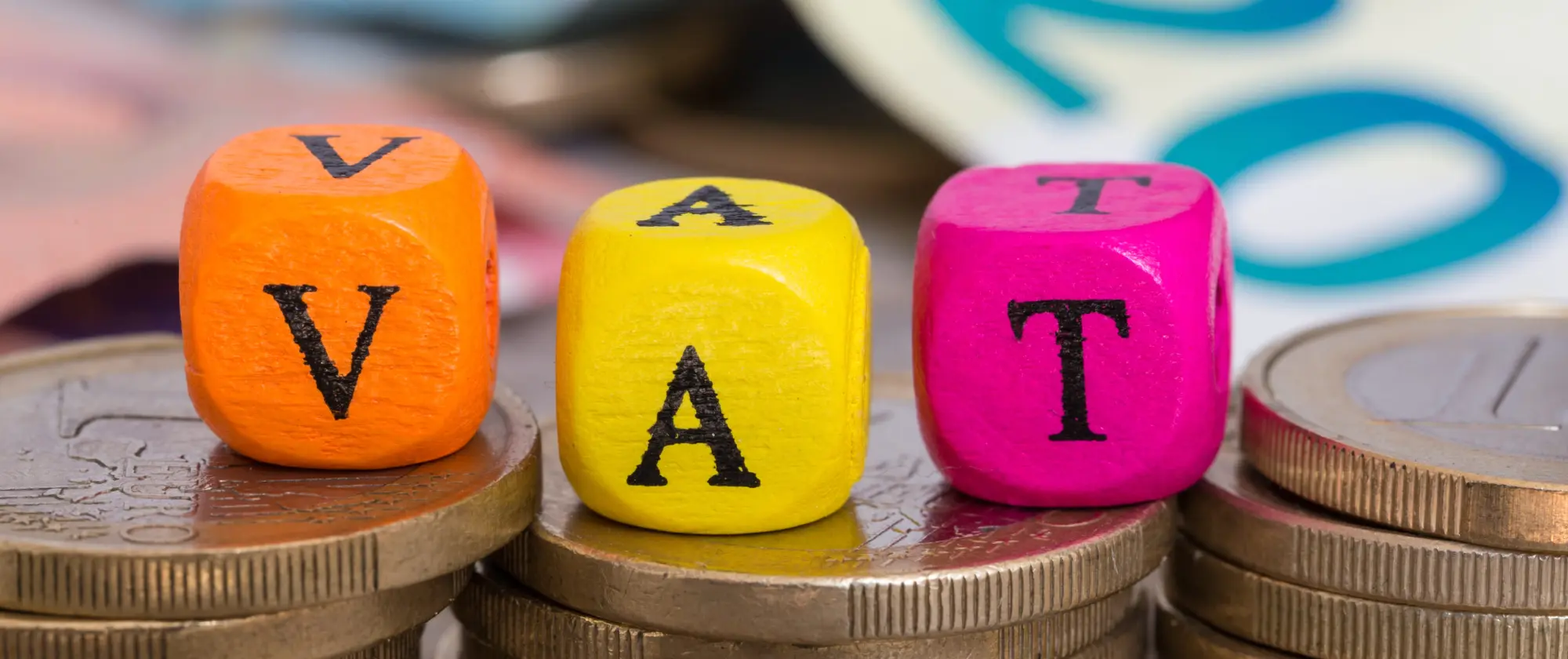
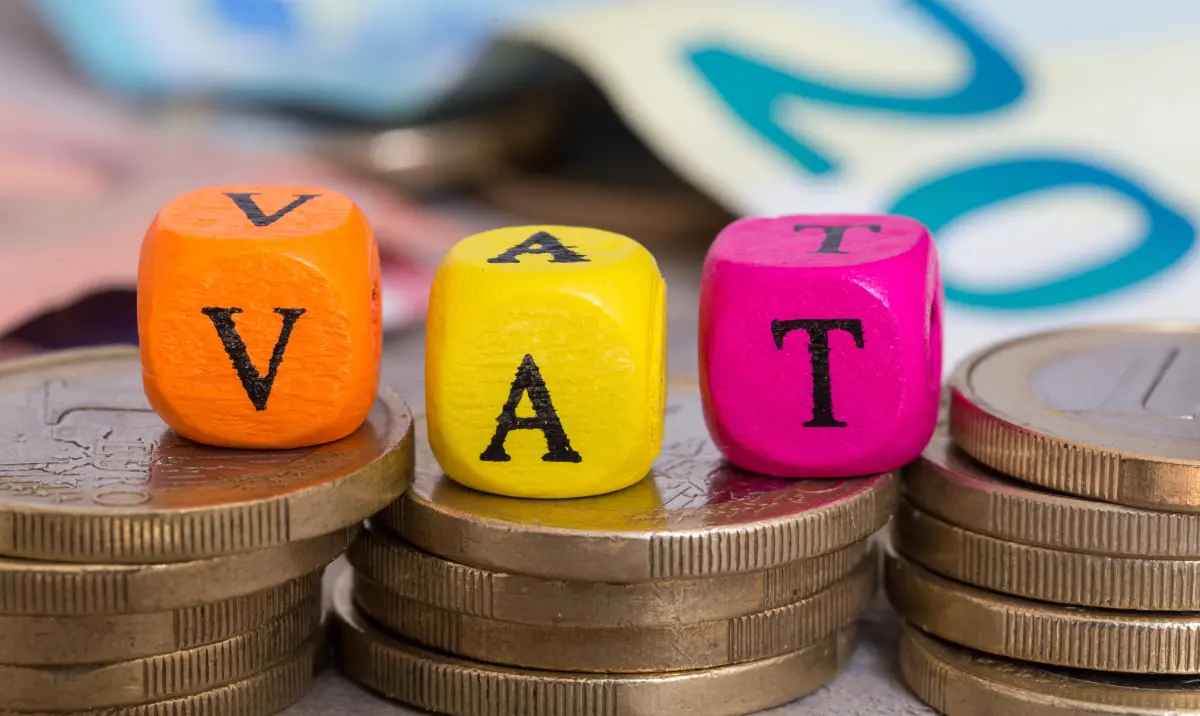
What are The Current VAT Rates for Restaurants in Denmark?
Understanding VAT (Value-Added Tax) is essential for restaurant owners in Denmark, as it directly impacts pricing, profitability, and tax compliance. Whether you’re running a fine dining establishment, a casual eatery, or a takeaway service, knowing the correct VAT rates and how they apply to different restaurant services is crucial for avoiding financial pitfalls and ensuring legal compliance.
Denmark has one of the highest VAT rates in Europe, making it important for restaurant owners to factor it into their pricing strategies. Additionally, different services—such as dine-in meals, takeaway orders, and alcohol sales—may have varying VAT implications. Navigating these regulations can be complex, but having a solid understanding of how VAT applies to your restaurant can help you manage costs, streamline tax filings, and optimize your business operations.
In this guide, we’ll cover everything you need to know about Denmark’s current VAT rates for restaurants, including:
- The standard VAT rate and how it applies to food and beverages
- VAT differences between dine-in, takeaway, and delivery services
- How to register for and file VAT in Denmark
- Common compliance challenges and tips to manage VAT efficiently
By the end of this article, you’ll have a clear understanding of how VAT affects your restaurant and what steps you need to take to remain compliant while maximizing profitability. Let’s dive in!
Understanding VAT for Restaurants in Denmark
Value-Added Tax (VAT) is a consumption tax applied at each stage of the supply chain, including restaurants, cafes, and other food service businesses. For restaurant owners in Denmark, understanding how VAT works is crucial for pricing menu items correctly, maintaining tax compliance, and optimizing financial planning.
The VAT system in Denmark follows specific rules regarding food, beverages, and restaurant services. This section will break down the fundamentals of VAT, including what it is, why it matters for restaurant owners, and how it impacts business operations.
What is VAT?
VAT, or Value-Added Tax, is a general consumption tax levied on goods and services at each stage of production and distribution. In Denmark:
- The standard VAT rate is applied to most goods and services, including restaurant meals.
- Businesses collect VAT from customers and remit it to tax authorities.
- VAT is non-negotiable—restaurants must charge and report it accurately to stay compliant.
For restaurants, VAT applies differently to various types of sales, including dine-in meals, takeaway orders, and beverage sales. Failing to apply the correct VAT rate can result in penalties and fines, making it essential for restaurant owners to stay informed about VAT regulations.
Why VAT Matters for Restaurant Owners
For restaurant businesses, VAT compliance isn’t just a legal requirement—it also plays a crucial role in financial planning and customer pricing. Here’s why VAT is important:
- Affects Menu Pricing: VAT is typically included in the final menu price, meaning restaurant owners must consider it when setting prices.
- Impacts Profit Margins: Incorrect VAT calculations can lead to lower profits or unexpected tax liabilities.
- Legal and Compliance Risks: Non-compliance can result in fines, penalties, and even audits by Danish tax authorities.
- Cash Flow Management: VAT collection and remittance affect a restaurant’s cash flow, making it vital to track VAT payments accurately.
By understanding VAT obligations, restaurant owners can better manage their pricing strategies, maintain compliance, and avoid costly mistakes in their tax filings.
Denmark’s Standard VAT Rates for Restaurants
Denmark has one of the highest VAT rates in Europe, which directly affects restaurant owners and their pricing strategies. Understanding the applicable VAT rates is crucial for ensuring compliance, maintaining profitability, and avoiding unnecessary tax penalties.
In Denmark, VAT applies to different types of food services, including dine-in meals, takeaway, delivery, and beverages. Some items may be subject to full VAT, while others might have special considerations. This section provides a detailed breakdown of the current VAT rates and how they impact restaurants.
What is the General VAT Rate in Denmark?
The standard VAT rate in Denmark is 25%, which applies to most goods and services, including restaurant meals. Key points to note:
- 25% VAT is charged on all restaurant services, including dine-in and catering.
- The same VAT rate applies to both food and alcoholic beverages sold in restaurants.
- Compared to other European countries, Denmark’s VAT rate is among the highest, which means restaurants must carefully consider pricing strategies to maintain profitability.
With such a high VAT rate, restaurants must ensure they calculate prices correctly to avoid losses. Unlike some EU countries that offer reduced VAT rates on food services, Denmark does not provide a lower rate for restaurant meals.
VAT on Food & Beverages in Restaurants
The 25% VAT applies across various restaurant offerings, but there are differences depending on the type of food and beverage:
- Dine-in meals: Fully taxable at 25%.
- Takeaway food: Also taxed at 25%, unlike in some countries where takeaway food might have a lower VAT rate.
- Alcoholic beverages: Always taxed at 25%, whether consumed on-site or taken away.
- Non-alcoholic beverages: Taxed at 25%, including soft drinks, coffee, and bottled water.
This uniform VAT rate simplifies tax calculations but can make pricing a challenge, especially when competing with businesses in neighboring countries that may offer reduced VAT rates on food services.
Reduced VAT Rates and Exemptions
Unlike some EU countries, Denmark does not offer reduced VAT rates for restaurant meals. However, there are a few special cases where VAT exemptions or reductions may apply:
- Hotel Breakfasts & Conference Catering: If included in an overnight stay package, VAT rules may differ.
- School and Institutional Canteens: Some canteens serving specific institutions may have VAT exemptions.
- Charitable and Non-Profit Events: Certain charity-run events may qualify for VAT exemptions.
While these exemptions are limited, restaurant owners should be aware of them if they provide catering or special services to institutions.
How VAT Works for Different Restaurant Services
VAT in Denmark applies differently depending on the type of restaurant service provided. While the standard VAT rate of 25% remains consistent, its application varies based on whether a customer is dining in, ordering takeaway, purchasing alcohol, or using delivery services.
Understanding these distinctions is crucial for restaurant owners to avoid miscalculations that could lead to compliance issues or unexpected tax liabilities. Below, we break down how VAT applies to different restaurant services.
VAT on Dine-In and Takeaway Orders
The VAT treatment of food sales in Denmark is straightforward:
- Dine-in meals – Fully taxable at 25%
- Takeaway meals – Also taxed at 25%, unlike in some EU countries where takeaway food has a lower VAT rate
- Pre-packaged food – Subject to the same 25% VAT if sold by restaurants, even if it is ready-to-eat
Some EU countries differentiate between takeaway and dine-in meals for VAT purposes, but in Denmark, both are taxed equally. This means restaurant owners do not need to separate VAT rates for dine-in and takeaway sales, simplifying bookkeeping but also increasing the cost for customers.
VAT on Alcoholic Beverages and Soft Drinks
In Denmark, VAT on beverages follows the same 25% standard rate, but it’s important to note the distinction between different types of drinks:
- Alcoholic beverages – Always taxed at 25%, whether consumed on-site or taken away
- Non-alcoholic beverages – Also taxed at 25%, including soda, coffee, tea, bottled water, and energy drinks
- Milk-based drinks – If classified as a basic food item (like milk), they may have different tax treatments, but this rarely applies in restaurants
Unlike in some other EU countries where alcohol is taxed differently or subject to additional duties, Danish VAT law keeps it simple—every beverage is taxed the same way. However, there may be additional excise duties on alcoholic drinks, which are separate from VAT.
VAT on Restaurant Delivery Services
Food delivery is an increasingly popular service, and in Denmark, VAT rules apply the same way as for dine-in and takeaway orders:
- Delivered meals – Subject to 25% VAT
- Third-party delivery platforms (e.g., Wolt, Just Eat, Uber Eats) – VAT responsibilities depend on the contractual agreement between the restaurant and the platform
For restaurants using third-party delivery services, it’s important to check whether they are responsible for charging VAT directly or if the platform handles VAT collection. Misunderstanding this can lead to incorrect tax filings.
Registering for VAT in Denmark
For restaurant owners in Denmark, VAT registration is a legal requirement once a business reaches a certain revenue threshold. Registering correctly ensures compliance with tax regulations, prevents legal penalties, and allows restaurants to reclaim VAT on business expenses. This section will guide you through when and how to register for VAT, as well as special considerations for foreign businesses operating in Denmark.
When Must a Restaurant Register for VAT?
All restaurants operating in Denmark must register for VAT if they meet the following criteria:
- Annual revenue exceeds DKK 50,000 – If your restaurant generates more than this in a 12-month period, VAT registration is mandatory.
- Engagement in taxable activities – This includes selling food, beverages, or any other VAT-liable services.
- Foreign businesses providing taxable restaurant services – If a non-Danish company operates a food service in Denmark, it may also be required to register for VAT.
If a restaurant does not meet the DKK 50,000 revenue threshold but still wants to register voluntarily, it can do so to claim VAT deductions on business expenses.
How to Register for VAT in Denmark
Registering for VAT is done through Erhvervsstyrelsen (the Danish Business Authority) and SKAT (the Danish Tax Authority). The process involves:
- Creating a CVR number – Before VAT registration, businesses must register with the Danish Business Authority and obtain a CVR number (business registration number).
- Filing for VAT registration – This is done online through the Virk.dk website or directly with SKAT.
- Providing required information, including:
- Business name and address
- Expected annual turnover
- Type of restaurant services offered
- Bank account details for VAT payments and refunds
- Receiving a VAT number – Once approved, your restaurant will receive a Danish VAT number (Momsnummer), which must be displayed on invoices and receipts.
- Starting VAT collection and reporting – From the date of registration, the restaurant must charge 25% VAT on taxable sales and submit VAT returns as required.
VAT Registration for Foreign Restaurant Businesses
Non-Danish businesses that operate a restaurant in Denmark or provide catering services may also be required to register for VAT. The key points include:
- Distance selling threshold does not apply – Since restaurant services involve physical consumption, VAT registration is required from the first sale.
- VAT representative may be needed – In some cases, foreign businesses must appoint a VAT representative in Denmark.
- Reverse charge mechanism – This does not typically apply to restaurant services but may be relevant for certain cross-border transactions.
Foreign companies planning to expand into Denmark should consult a tax expert to ensure they comply with Danish VAT laws.
VAT Calculation and Invoicing for Restaurants
Accurate VAT calculation and invoicing are essential for restaurant owners in Denmark to ensure compliance with tax regulations and maintain transparent financial records. Since the standard VAT rate is 25%, restaurant owners must correctly apply this tax to menu prices and issue VAT-compliant invoices for their transactions.
This section will cover how to calculate VAT on restaurant bills, what details must be included in invoices, and how VAT applies to service charges and tips.
How to Calculate VAT on Restaurant Bills
To ensure proper VAT collection, restaurant owners must understand how to calculate VAT for different transactions. Here’s how:
- VAT-inclusive pricing (most common method)
- If menu prices already include VAT, you can calculate the VAT amount using this formula:
VAT = Total price × (VAT rate / (100 + VAT rate)) - Example: For a meal priced at DKK 200 (including VAT), the VAT amount is:
DKK 200 × (25 / 125) = DKK 40 VAT - The net price (before VAT) is DKK 160, and VAT is DKK 40, totaling DKK 200.
- If menu prices already include VAT, you can calculate the VAT amount using this formula:
- VAT-exclusive pricing (adding VAT separately)
- If VAT is added to the final price, use this formula:
Total price = Net price × (1 + VAT rate/100) - Example: A restaurant wants to charge DKK 160 before VAT. The final price including VAT is:
DKK 160 × 1.25 = DKK 200
- If VAT is added to the final price, use this formula:
Using a POS (Point-of-Sale) system that automatically calculates VAT helps restaurants avoid manual errors and simplifies tax reporting.
Issuing VAT-Compliant Invoices
For VAT compliance, Danish tax law requires restaurants to issue proper invoices that contain specific details. A VAT-compliant invoice should include:
- Restaurant’s name, address, and VAT number (Momsnummer)
- Invoice date and unique invoice number
- Customer details (for B2B transactions)
- Description of goods and services sold (e.g., “3-course meal, soft drinks”)
- Price before VAT, VAT amount, and total price including VAT
- Applicable VAT rate (25%)
For cash payments and smaller transactions, issuing a full invoice is not always required, but proper records must still be kept for tax reporting.
VAT on Service Charges and Tips
Service charges and tips can sometimes create VAT confusion. In Denmark:
- Service charges (e.g., automatic gratuities) are taxable at 25% if they are included in the bill.
- Voluntary tips given by customers are not subject to VAT, as they are considered a gift rather than a taxable sale.
To avoid complications, restaurants should clearly indicate whether service charges are included in menu prices and how tips are handled.
How to File and Pay VAT for Your Restaurant
Once a restaurant is registered for VAT in Denmark, it must regularly file VAT returns and ensure timely payments to avoid penalties. The VAT filing process involves calculating collected VAT, deducting eligible input VAT, and submitting reports to the Danish Tax Authority (SKAT).
This section will explain VAT filing deadlines, the submission process, and what happens if a payment is missed.
VAT Filing Deadlines and Payment Schedule
Restaurants in Denmark must file VAT returns according to the reporting frequency assigned by SKAT. The schedule depends on the restaurant’s annual turnover:
- Annual revenue below DKK 5 million → VAT is filed every six months.
- Annual revenue between DKK 5 million and DKK 50 million → VAT is filed quarterly.
- Annual revenue above DKK 50 million → VAT is filed monthly.
Restaurants must ensure they meet their assigned deadlines, as late submissions result in penalties.
How to Submit VAT Returns in Denmark
Filing VAT is done digitally through the TastSelv Erhverv system, an online portal provided by SKAT. The steps to file VAT include:
- Log into TastSelv Erhverv via SKAT’s website using your NemID or MitID.
- Input VAT details, including:
- Total VAT collected from sales (output VAT)
- VAT paid on business expenses (input VAT)
- The difference between collected and deductible VAT
- Review calculations to ensure no errors in reported VAT amounts.
- Submit the VAT return before the deadline.
- Make the VAT payment using a bank transfer or direct debit linked to your business account.
If the restaurant has more input VAT than output VAT, meaning it has paid more VAT on expenses than it collected from sales, it may be eligible for a VAT refund from SKAT.
What Happens If You Miss a VAT Payment?
Failing to file and pay VAT on time can result in serious consequences:
- Late filing penalties – If a VAT return is not submitted by the deadline, SKAT may impose a fine.
- Interest charges – Unpaid VAT amounts accrue interest, increasing the total amount owed.
- Legal action – If a restaurant continuously fails to meet VAT obligations, SKAT may take legal steps, such as freezing business accounts or revoking VAT registration.
To avoid penalties, restaurants should:
✅ Set automatic reminders for VAT deadlines.
✅ Use accounting software to track VAT obligations.
✅ Consult a tax advisor if unsure about VAT reporting.
Timely VAT filing ensures smooth business operations and helps avoid unnecessary financial losses.
VAT Deductions and Refunds for Restaurants
Restaurants in Denmark can benefit from VAT deductions and refunds to reduce their overall tax burden. By deducting input VAT paid on business-related expenses, restaurant owners can lower their VAT liability. Additionally, in some cases, they may even receive a VAT refund from SKAT (Danish Tax Authority).
This section will explain which expenses qualify for VAT deductions, how to claim them, and when restaurants are eligible for VAT refunds.
Can Restaurants Claim VAT Refunds?
Yes, restaurants in Denmark can claim VAT refunds if they have more input VAT than output VAT in a given reporting period. This means:
- The VAT paid on business expenses exceeds the VAT collected from customer sales.
- The business is in a low-sales period but has high operating expenses.
- Large one-time investments, such as kitchen equipment or renovations, result in more VAT paid than earned.
If eligible, the Danish Tax Authority reimburses the excess VAT, usually within a few months after submission.
How to Claim VAT Deductions
To legally deduct VAT, restaurant owners must ensure that expenses meet the following criteria:
- The expense is business-related (personal expenses do not qualify).
- A valid VAT invoice is available, including the supplier’s VAT number and transaction details.
- The VAT amount is correctly calculated and recorded in the restaurant’s accounting system.
Common deductible expenses include:
✅ Food and beverage supplies (excluding alcohol for resale)
✅ Kitchen and restaurant equipment (ovens, refrigerators, furniture)
✅ Rent and utilities (electricity, water, heating for the business premises)
✅ Cleaning and maintenance services
✅ Digital tools (POS systems, restaurant management software)
✅ Marketing and advertising costs
However, some items are NOT deductible, including:
❌ Alcohol for resale (subject to special rules)
❌ Entertainment expenses (e.g., business meals for personal enjoyment)
❌ Personal-use items (e.g., clothing, non-business travel)
VAT Refunds for Tourists and Non-Danish Residents
Tourists and non-Danish residents may be eligible for VAT refunds when dining in Denmark, under specific conditions:
- The refund applies mainly to takeaway food purchases, as restaurant meals are generally not eligible.
- The total VAT amount must meet a minimum threshold.
- Tourists must request a VAT refund form from the business and process it through an approved refund service before leaving Denmark.
Although restaurant owners are not directly responsible for handling tourist VAT refunds, they should be aware of the process if serving international customers.
By managing VAT deductions and refund claims effectively, restaurants can reduce their tax burden, improve cash flow, and optimize profitability.
Common VAT Challenges for Restaurants
Managing VAT can be complex for restaurant owners in Denmark due to frequent transactions, varied tax applications, and strict compliance requirements. Failure to handle VAT correctly can result in fines, audits, or financial losses. Understanding common VAT challenges and how to address them can help restaurant owners stay compliant and optimize their tax strategy.
Dealing with VAT Audits and Inspections
The Danish Tax Authority (SKAT) conducts periodic VAT audits to ensure businesses comply with tax regulations. Restaurants are particularly scrutinized because they deal with high cash flow and frequent transactions. Here’s what restaurant owners should be aware of:
- Reasons for a VAT audit:
- Discrepancies in VAT filings
- Late or missing VAT returns
- Irregularities in sales records or expense claims
- How to prepare for an audit:
- Maintain accurate sales and expense records
- Ensure invoices and receipts match reported VAT amounts
- Use digital accounting tools to track VAT transactions
- What happens during an audit:
- SKAT may request financial records for the past five years
- Inspectors might visit the restaurant to verify transactions
- If errors are found, the restaurant may face penalties or back payments
Regular internal VAT checks and a well-organized bookkeeping system can help restaurants avoid audit-related issues.
VAT Fraud and How to Avoid It
VAT fraud is a serious offense that can lead to heavy fines or legal consequences. Some common fraudulent practices in the restaurant industry include:
- Underreporting sales – Not declaring all revenue to reduce VAT liability.
- Falsifying invoices – Creating fake invoices to claim higher VAT deductions.
- Splitting transactions – Manipulating bills to avoid VAT charges.
To avoid VAT fraud accusations:
✅ Record all transactions transparently in your POS system.
✅ Keep original invoices and receipts for all purchases.
✅ File VAT returns on time and accurately.
✅ Consult a tax expert if you are unsure about VAT calculations.
By staying compliant and maintaining proper documentation, restaurant owners can protect their business from legal trouble.
Key VAT Compliance Tips for Restaurant Owners
Staying compliant with VAT regulations is crucial for restaurant owners in Denmark. Proper VAT management helps avoid legal issues, prevents financial penalties, and ensures smooth business operations. By implementing best practices, restaurant owners can simplify VAT handling and reduce the risk of errors.
How to Keep Accurate VAT Records
Maintaining well-organized financial records is essential for VAT compliance. Here are some key steps to follow:
- Keep all invoices and receipts – Ensure that every transaction has a properly documented invoice, including supplier details, VAT amounts, and payment proof.
- Use a reliable bookkeeping system – Digital accounting software or a professional accountant can help track and record VAT payments and deductions accurately.
- Separate business and personal expenses – Only business-related purchases qualify for VAT deductions, so keep personal expenses out of restaurant accounts.
- Store VAT records for at least five years – Danish tax authorities may request historical financial records for audits.
Proper record-keeping reduces the chances of errors and ensures that the restaurant is prepared for any tax audits.
VAT Software and Digital Tools
Automating VAT calculations and filings can significantly reduce the administrative burden for restaurant owners. Using digital tools offers several benefits:
✅ POS (Point-of-Sale) systems – Automatically apply VAT rates to sales and generate VAT-compliant receipts.
✅ Accounting software – Tracks VAT transactions, generates VAT reports, and integrates with SKAT’s online tax filing system.
✅ Expense management apps – Helps store and categorize receipts for VAT deductions.
Popular accounting software like Dinero, e-conomic, or Billy can help restaurant owners simplify VAT tracking and ensure compliance.
When to Seek Professional VAT Advice
While small restaurants may manage VAT themselves, complex VAT rules or high transaction volumes may require expert assistance. Consider hiring a VAT consultant or accountant if:
- You are unsure about VAT rates and exemptions.
- Your restaurant has multiple revenue streams (dine-in, takeaway, delivery).
- You are dealing with cross-border VAT issues (foreign suppliers, international catering).
- You want to optimize VAT deductions and refunds.
A tax professional can help you minimize errors, maximize deductions, and avoid costly compliance mistakes.
By following these VAT compliance tips, restaurant owners in Denmark can ensure smooth tax operations and avoid unnecessary financial risks.
The Future of VAT for Restaurants in Denmark
As economic conditions, government policies, and digital advancements evolve, VAT regulations for restaurants in Denmark may also change. Restaurant owners need to stay updated on potential VAT rate adjustments, emerging compliance requirements, and technological shifts that could impact their tax obligations.
This section explores the likelihood of future VAT changes, the role of digitalization in VAT reporting, and how restaurant owners can prepare for upcoming trends.
Will VAT Rates Change in the Coming Years?
While the current VAT rate for restaurants in Denmark is 25%, there is ongoing discussion among policymakers regarding potential adjustments:
- Possible rate increases – If economic conditions require increased tax revenue, VAT rates could rise, further impacting restaurant pricing and profitability.
- Calls for reduced VAT on food services – Some industry groups have advocated for a lower VAT rate on restaurant meals to encourage dining out and support the hospitality sector. However, Denmark has not introduced any reduced VAT rates for food services, unlike some EU countries.
- Harmonization with EU VAT policies – The European Union continues to review VAT structures, and any changes at the EU level could influence Denmark’s VAT policies.
While there are no confirmed plans for VAT rate changes, restaurant owners should monitor government updates and be prepared for potential adjustments.
How Digitalization is Changing VAT Compliance
The Danish tax authorities are increasingly focusing on digital compliance, making VAT reporting more automated and efficient. Key trends include:
✅ E-invoicing adoption – The government may require more businesses to use electronic invoicing to improve tax transparency and prevent fraud.
✅ Real-time VAT reporting – Some EU countries are implementing real-time VAT reporting to reduce tax evasion; Denmark could adopt similar measures in the future.
✅ AI-driven VAT audits – Tax authorities may use artificial intelligence to detect inconsistencies in VAT filings, leading to more frequent automated audits.
Restaurant owners should embrace digital VAT tools early to stay ahead of compliance changes and avoid last-minute adjustments when new regulations take effect.
How Restaurants Can Prepare for Future VAT Changes
To safeguard against unexpected VAT shifts, restaurants should:
- Regularly review tax policies – Subscribe to industry newsletters or consult tax professionals to stay updated.
- Invest in VAT-friendly accounting software – Using digital tools ensures compliance with evolving tax regulations.
- Plan for price adjustments – Be ready to modify menu prices if VAT rates increase, ensuring profitability remains stable.
- Maintain accurate records – Organized financial data will make it easier to adapt to new reporting requirements.
By staying informed and adopting digital solutions, restaurant owners can future-proof their business against potential VAT changes and compliance updates.
Key Takeaways
Understanding and managing VAT correctly is crucial for restaurant owners in Denmark, as it directly affects pricing, compliance, and overall profitability. Below are the most important points covered in this guide:
✅ Denmark’s VAT rate for restaurants is 25% – This applies to dine-in meals, takeaway, delivery services, and beverages, including alcohol and soft drinks.
✅ All restaurants must register for VAT once they exceed the DKK 50,000 revenue threshold or voluntarily opt in to reclaim input VAT on business expenses.
✅ VAT filing is mandatory – Depending on annual turnover, restaurants must file VAT every month, quarter, or six months via SKAT’s TastSelv Erhverv portal.
✅ Proper invoicing and record-keeping are essential – Restaurants must issue VAT-compliant invoices and store financial records for at least five years.
✅ VAT deductions can reduce tax burdens – Businesses can claim VAT refunds on eligible expenses like food supplies, kitchen equipment, and operational costs.
✅ Failure to comply with VAT regulations can lead to penalties – Late VAT filings, underreporting, or incorrect tax calculations may result in fines, interest charges, or audits.
✅ Digitalization is shaping VAT compliance – E-invoicing, AI-driven tax audits, and potential real-time VAT reporting may impact future restaurant tax management.
✅ Stay informed about possible VAT rate changes – Although no reductions are currently in place, industry discussions continue about VAT relief for food service businesses.
By staying proactive with VAT compliance, leveraging digital tools, and keeping up with regulatory changes, restaurant owners can avoid financial pitfalls and run a more profitable, tax-efficient business.
Frequently Asked Questions on VAT for Restaurants in Denmark
Wondering how VAT impacts restaurant pricing in Denmark? Here are answers to the top queries diners, restaurateurs, and business owners frequently search for.
What is the VAT rate for restaurant meals in Denmark?
Denmark applies a single standard VAT rate of 25 % to most goods and services, including restaurant meals. Unlike many EU countries, Denmark does not have reduced VAT rates for hospitality sectors.
Why does Denmark charge the same VAT rate for restaurants as for all other goods?
Since 1992, Denmark has maintained a uniform VAT system—25 % across the board—with no reduced rates, even for essentials like food or dining services. This makes the VAT system simple but higher than in countries with special hospitality rates.
Are any dining-related services exempt from VAT in Denmark?
No—services like restaurant meals are fully subject to the 25 % VAT rate. Only a limited set of items, such as printed newspapers and certain transport services, qualify for 0 % VAT or exemptions.
Do foreign restaurant owners need to register for Danish VAT?
Yes—any business operating in Denmark that sells taxable services (including restaurants) must register for VAT if annual turnover exceeds DKK 50,000 (roughly €6,700). There’s no threshold exemption for non-resident businesses.
How does Denmark’s restaurant VAT compare to other EU countries?
Denmark’s flat 25 % VAT rate is among the highest in the EU. Many countries offer reduced rates (e.g., 12 %) for hospitality. Denmark’s approach is simpler but results in higher consumer costs for dining out.
ABOUT THE AUTHOR
Erkin Coban
Your Customers Deserve The Best
And we got Menuviel for them.
The fastest and easy-to-use online QR menu with 12+ unique features. Choose Menuviel and elevate your service quality to the next level.
Use free for the first 30 days.
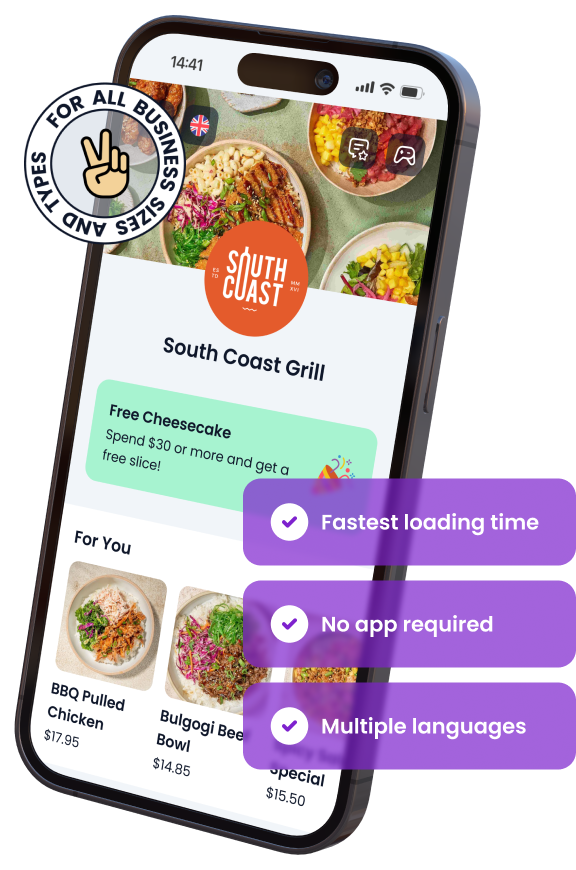
In This Article

Free AI Tools for Restaurants
TRY NOW ➜

Manage what’s available - anytime, instantly
Show or hide menus, categories, or items instantly. Perfect for time-based offerings or sold-out dishes.



